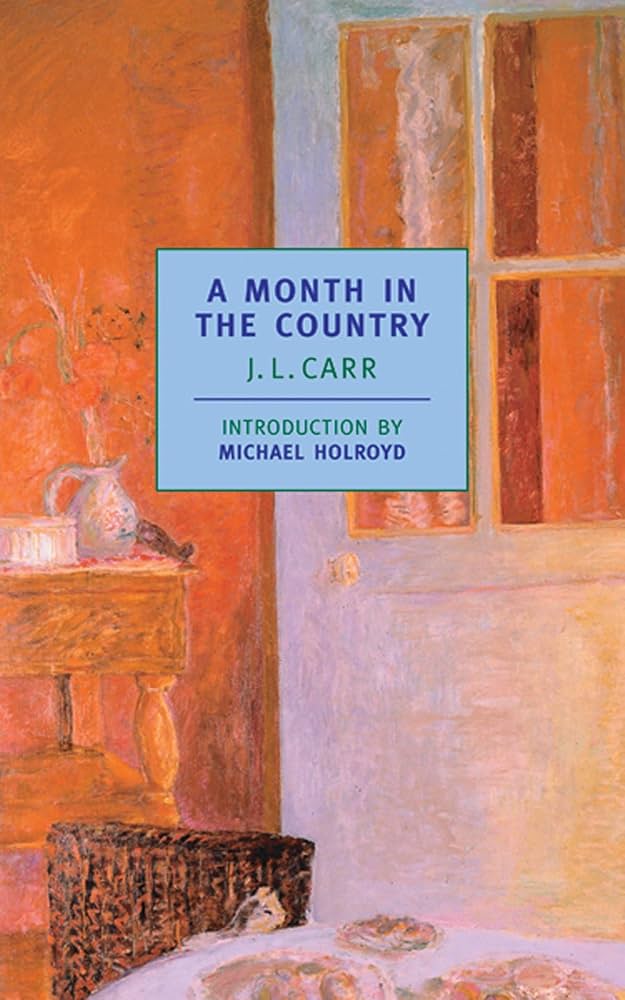
In 1980, British writer J.L. Carr (1912-1994) published a short novel. It was one of eight he would publish during his life. And it turned out to be the one that became something of a classic. Even today, it’s considered a “perfect novel.”
The novel is A Month in the Country. It has the kind of plot that wouldn’t lead you to believe it would become as famous as it has. A veteran of World War I, who specialized in art restoration before the war, has been hired to uncover a mural in a small chapel in Yorkshire, one dating to early Anglo-Saxon times. At some point in the past, perhaps during the dissolution of the monasteries and raiding of the churches by Henry VIII, the mural has been covered over.
Now the church authorities want it restored, if possible. Thomas Birkin, the veteran is still suffering from post-traumatic stress disorder (called something else back then), largely manifested by a nervous tic in his face that he can’t control. His wife has deserted him, although she had deserted him many times before. It’s a perfect job for Birkin – away from people, away from stress, and it might just give him the time he needs to heal.

Working near the adjacent cemetery is another veteran, Charles Moon, who’s been hired to find the bones of an ancestor of a former parishioner, who believed the burial was somewhere near the cemetery. Moon and Birkin become friends. And it will turn out that Moon is also healing from a different kind of wartime experience.
Inevitably, Birkin finds himself being drawn into the life of the nearby village of Oxgodby. The townspeople, including the vicar’s wife, will also help Birkin heal. Rather surprisingly, nothing will quite turn out the way the reader expects, and that’s part of what gives the novel its charm.
The book was made into a movie of the same name in 1987, starring Colin Firth as Birkin, Kenneth Branagh as Moon, Natasha Richardson as the vicar’s wife, and Patrick Malahide as the priggish vicar.
Carr drew on his own background of growing up in Yorkshire for all his novels, including A Month in the Country. The themes of art, vanished village life, community, and healing are worked through his books.
It’s a gem of a story, the uncovering of the mural (and the artist) a significant part of it. Life never quite works out the way you think it will, and sometimes that’s a very good thing.













